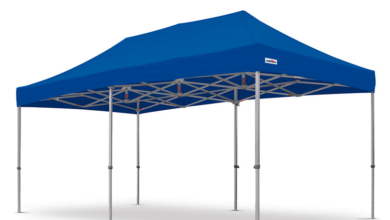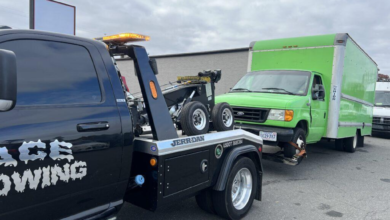
Digital Signage vs. Traditional Signs: What Works Best for Dealerships?
If you’ve ever walked into a car dealership, you know the first impression matters. The signs, screens, and displays around you instantly set the tone for the experience. For decades, traditional signs—banners, posters, window decals—did the heavy lifting. But over the past few years, Digital Signage has taken the spotlight, offering dealerships new ways to communicate, engage, and impress.
So, which one really works best for dealerships: tried-and-true traditional signs or the sleek, modern approach of digital displays? Let’s break it down.
Table of Contents
The Role of Traditional Signs in Dealerships
The Classic Benefits
Traditional signage has been the bread and butter for dealerships for as long as I can remember. Things like vinyl banners, window stickers, and posters do a great job of announcing sales, service specials, or seasonal promotions. They’re cost-effective upfront, easy to design, and once printed, they require zero tech knowledge to use.
Growing up, I remember my uncle’s small-town dealership always had a massive “YEAR-END CLEAROUT” banner draped across the lot. People driving by could spot it from the street, and it worked—it created urgency and foot traffic.
The Limitations
But here’s the thing: once those signs are printed, they’re set in stone. If the date of the sale changes or a new model arrives, the dealership either has to scrap the old signage or live with outdated information. Not only is that wasteful, but it also makes the dealership look behind the times.
Another limitation is flexibility. A poster can’t rotate between multiple promotions. A banner can’t highlight today’s service special in the morning and a financing offer in the afternoon. And in a world where customers expect real-time information, that’s a big disadvantage.
The Rise of Digital Signage
What It Brings to the Table
Unlike traditional signs, Digital Signage gives dealerships a dynamic, flexible, and modern way to communicate with customers. Imagine walking into the service lounge and seeing a sleek screen that not only welcomes you by name but also shows the estimated wait time for your vehicle, highlights seasonal tire promotions, and even streams the latest manufacturer videos.
That’s the beauty of digital: you can update content instantly. Whether it’s announcing a flash sale, showcasing new arrivals, or even displaying weather updates, everything can be managed centrally and switched on the fly. This is exactly why more dealerships are turning to car dealership digital signage to modernize the showroom and service experience.
Engagement Beyond Static Signs
Digital displays do more than just share information—they engage. Moving graphics, animations, and video capture attention in ways that a paper sign never could. Customers waiting for service are far more likely to notice (and remember) a video about extended warranties than a poster on the wall.
When I first saw this in action at a local dealership, it struck me how effective it was. While waiting, I found myself watching the screen loop through service offers, upcoming events, and even customer testimonials. By the time my car was ready, I was asking about a maintenance package I’d seen advertised on the screen. That’s the real power of dealership digital signage—it doesn’t just sit there; it inspires action.
Side-by-Side: Digital vs. Traditional
Here’s a quick comparison to highlight the key differences:
Flexibility
- Traditional Signs: Fixed messaging, costly to replace.
- Digital Signage: Instantly updated, can show multiple messages throughout the day.
Cost
- Traditional Signs: Cheaper upfront, but ongoing costs for reprints add up.
- Digital Signage: Higher initial investment, but lower long-term costs since updates are digital.
Customer Engagement
- Traditional Signs: Static, easy to overlook.
- Digital Signage: Dynamic, attention-grabbing, and capable of personalization.
Sustainability
- Traditional Signs: Lots of waste with reprints and disposals.
- Digital Signage: Eco-friendlier, since changes are made digitally.
When Traditional Signs Still Make Sense
To be fair, traditional signs aren’t going extinct anytime soon. For outdoor advertising—like giant lot banners or eye-catching decals on the showroom windows—traditional signage is still powerful. It’s visible from the street, doesn’t rely on electricity, and can withstand weather.
For example, if you want to announce a “3-Day Truck Sale” to everyone driving by, a massive outdoor banner is still a smart move. Traditional signage also works well for temporary, short-term messages that don’t justify a digital update.
The Future Belongs to Digital
Still, the dealership of the future is going digital. Customers expect seamless, modern experiences in every industry, and automotive is no exception. Digital signage doesn’t just inform—it enhances the overall automotive customer experience.
Think about it:
- Service departments can display live status boards.
- Sales floors can showcase rotating promotions or highlight financing options.
- Waiting lounges can entertain and educate with brand videos, news, or even local weather updates.
Plus, digital signage integrates with other dealership technologies, like appointment scheduling or text updates, creating a smooth, connected customer journey. This is why so many forward-thinking stores now invest in car dealership digital signage as a key part of their customer engagement strategy.
Finding the Right Balance
The truth is, the best approach might be a hybrid. Traditional signs can still be effective for big, broad messages, especially outside. But inside the dealership, digital reigns supreme. The combination ensures maximum visibility while also keeping communication fresh, modern, and flexible.
When I visit dealerships now, I notice that the ones using dealership digital signage feel more polished and professional. It gives the impression that the dealership is forward-thinking and customer-focused—something younger buyers especially value.
Final Thoughts
So, what works best for dealerships—digital or traditional? The answer depends on how you use them. Traditional signs have their place, especially outdoors, but digital signage offers unmatched flexibility, engagement, and customer experience benefits inside the dealership.
At the end of the day, it’s not just about displaying information—it’s about creating an experience that makes customers feel informed, valued, and engaged. And that’s where digital shines.
If your dealership hasn’t made the switch yet, now’s the time to explore the power of Digital Signage.








